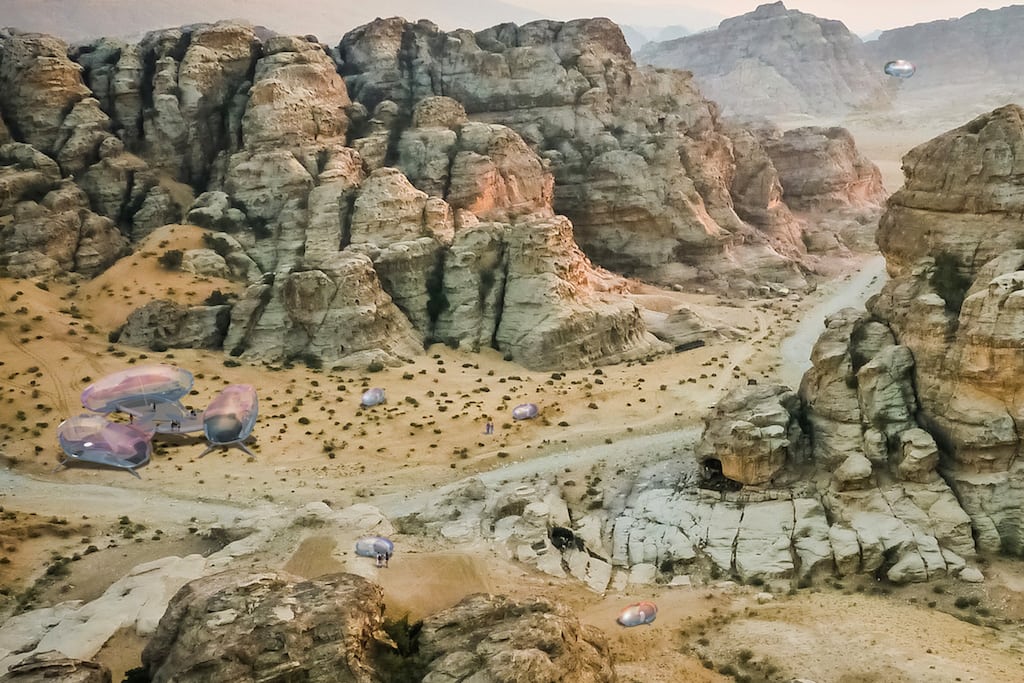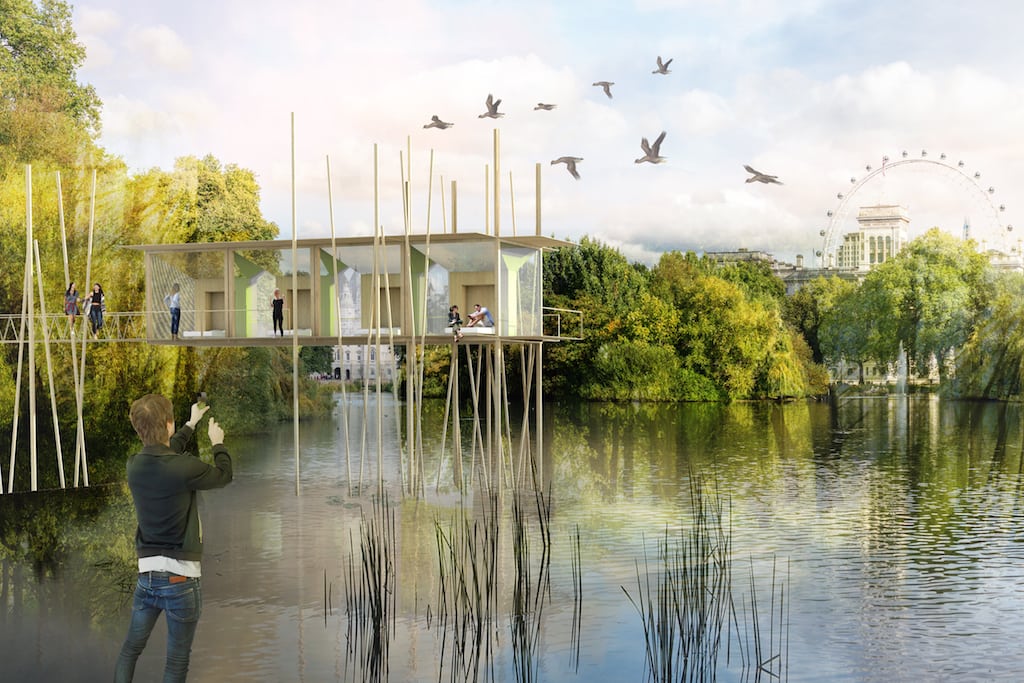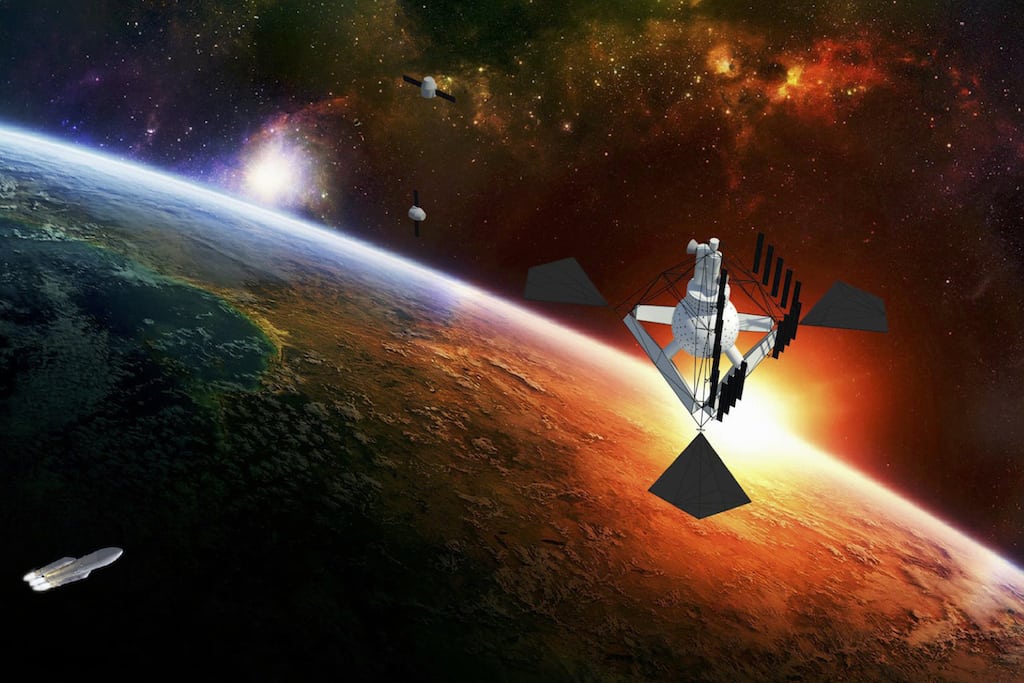Skift Take
These ideas may seem a bit far-fetched for now, but they point to a future where hospitality can take you to places you never expected to be able to stay.
Every year since 2007, The John Hardy Group, a global hospitality development consultancy, has hosted a contest called Radical Innovation, asking for designers and architects around the world to submit their concepts for the hotel of the future.
In past years, ideas have included an undersea resort, an oil rig platform resort and spa, and a co-living/co-working space called Zoku that opened in May. This year’s two finalists borrowed inspiration from drones and city parks to come up with their pitches, both of which will be judged on October 5 before an audience of hotel developers, owners, executives, and designers, who will award a Grand Prize of $10,000 to the winner.
If there were a shared theme between the two finalists it would be mobility. Both designs — Driftscape and Nesting — present a hotel that can be placed, well, almost anywhere really, allowing for people to have unique interactions with their surroundings. Here’s a closer look.
Drone-Driven Driftscape
Toronto-based HOK, which has worked on such hotels including the Lotte New York Palace Hotel’s Jewel Suite and the Marriott Marquis in Washington, D.C., submitted an idea for what it described as “a mobile, self-sustaining hotel that, through the use of drone technology, allows guests to roam or touch down in diverse locations that were previously unattainable at traditional hotels.”
Here’s how it works: Imagine being able to fly to Arizona near the Grand Canyon, said Randa Tukan, HOK director of hospitality, and from there, being picked up by your very own drone-powered Driftcraft, a mobile hotel room that can sustain two guests for up to two to three days. From there, your Driftcraft will take you to the Oasis, a sort of service hub that provides food and beverage, a space to lounge, and an area to connect. The Oasis also acts a control center to supervise the path of the individual Driftcraft.
After stopping at the Oasis, guests can then choose to travel via their Driftcraft to a space somewhere inside the canyon, but not too far from the Oasis. It’s sort of like a tricked-out camp tent, although it would be made out of aerospace-developed alloy materials and it has a real bed and, of course, a great view. Individual Driftcraft can travel on their own or in groups for a more communal experience.
When asked if they worry about Driftscape having a negative impact on ecologically sensitive areas, Tukan said that because it would be such a curated experience, every measure would be taken to address any concerns related to safety and environmental impact. “It’s not rooted to the ground. There is no foundation. The organizers or hotel owners can control it and will know where it’s OK to have it,” she said.
“Guests don’t just go to a hotel and stay on property anymore,” said Ian Rolston, HOK senior project designer. “They want to get out and experience what the place is all about.”
John Hardy, founder of Radical Innovation CEO of the John Hardy Group said, “Driftscape offers the adventure resort traveler the opportunity to customize their setting based on their own personal environmental preferences. The mobility offered through the use of innovative technology and design is not as far off in the future as it may seem. Many innovative business concepts and technological advancements were never even dreamed of before they happened. It is very challenging, at times, when evaluating Radical Innovation contestants to really be sure what you think you are looking at is what you think it is. It is often not the case when looking back at them.”
Nature, Nurtured with Nesting
Similar to how the High Line gave New York City dwellers a new way to interact with nature in an urban environment, Nesting by MM Architects Designers & Planners is a contemporary, modular-take on the modern treehouse.
The concept involves three to four customizable, modular constructs raised above the ground 10 to 20 feet, where people can meet, work, sleep and live. “The hanging system liberates the soil so people can continue to use the lawn but it enables us to have a different experience. You can see the park in a different way,” said Marc Mussche, an MM architect and designer. “You can still use the park as it is.”
Véronique Mussche, an MM architect and designer, said that as cities become increasingly crowded and people seek out new places to meet but also to interact with more natural surroundings, something like Nesting builds upon the parks already serving as gathering places, and leverages that use in a new and hopefully profitable way.
“Parks are where people want to gather,” she said. “It’s important, when we think of cities, to think of concepts that really utilize the space we have. You don’t want a hotel building with rooms that are empty all day long. Each space in the city should be used all day long, 24 hours a day.”
Not only would Nesting be fairly self-sustaining, but it would also be able to support itself — and its surroundings — financially. Both Marc and Véronique Mussche suggested that Nesting modules could also help to generate funds for municipalities to keep their parks open and that they help prevent parks from being “overtaken by global real estate” or commoditized by big companies.
“In the next 20 years, most of us will be living in cities and not so much in nature anymore,” said Marc Mussche. “Our basic concern in hospitality is the new urban landscape. Cities have to spend a lot to keep parks open. You can use Nest Inn to give to the state or the city the possibility to recover some financing.”
“Nesting is a great example of the creative use of a public /private partnership that can benefit both sides,” said Hardy. “The concept can offer a new creative financing technique to expand the publicly owned real estate resource base and improve the public infrastructure that would otherwise not be capitalized to accomplish it and give the traveling consumer a new and unique hospitality experience by combining urbanism and nature in such a way that would not be possible otherwise.”
To Infinity and Beyond
Another entry in the Radical Innovation contest, submitted by a student, was a pitch for the Space View Inn. U.S. student Juan Orduz was named the 2016 Student Winner for his entry, which envisioned a new form of space travel that’s much more spacious and inviting than the current space stations we have today. Orduz’s plan also includes a lottery system for space travel, allowing for people from all economic backgrounds to be able to travel to space.
Orduz will also present his design on stage on October 5 at the New Museum in New York, and for winning, he receives a $1,500 cash prize and a two-year full scholarship to earn a master’s degree in hospitality design from the University of Las Vegas, Nevada.
Have a confidential tip for Skift? Get in touch
Tags: climate change, drones, sustainability
Photo credit: Driftscape, designed by Toronto-based HOK, envisions a mobilized hotel consisting of drone-powered hotel rooms. HOK/Radical Innovation


